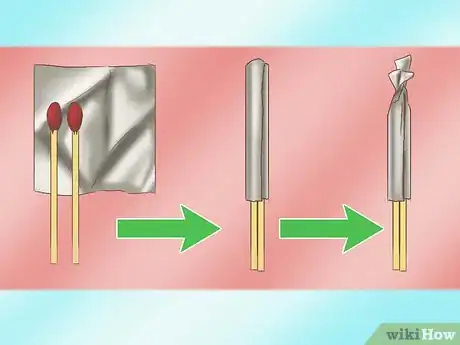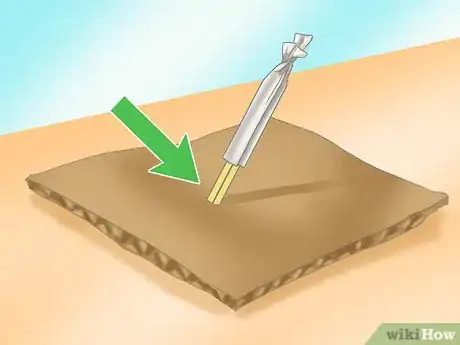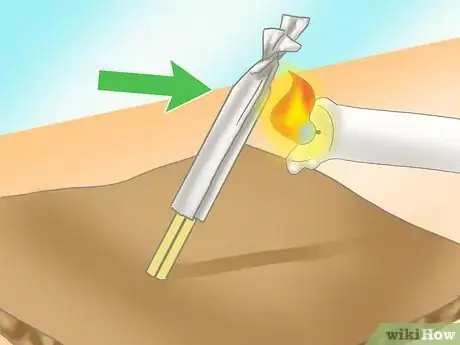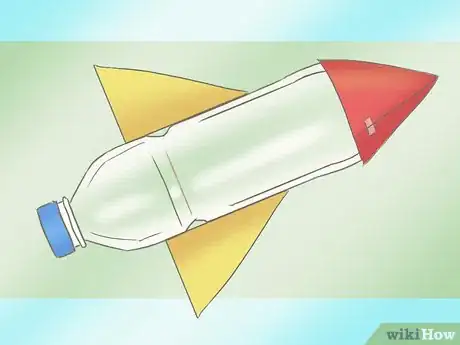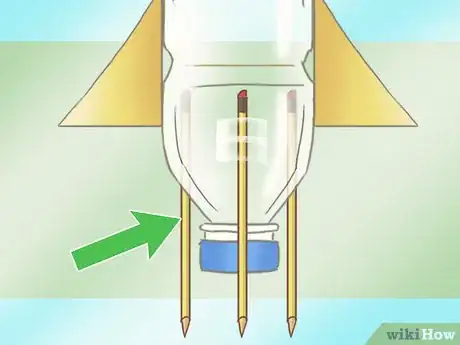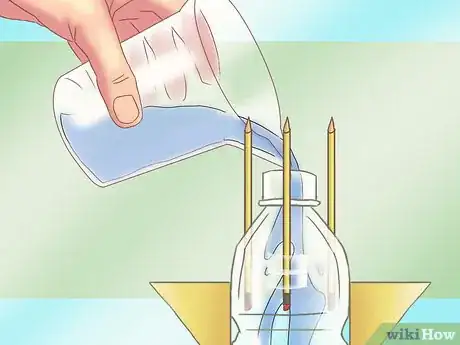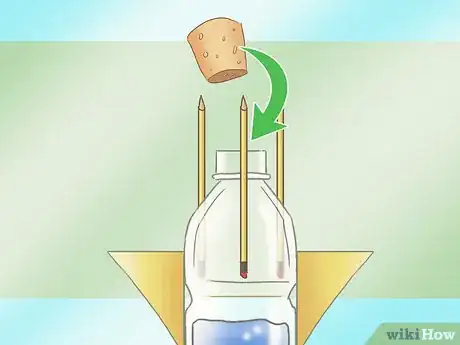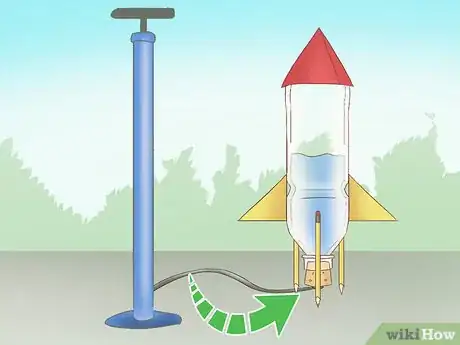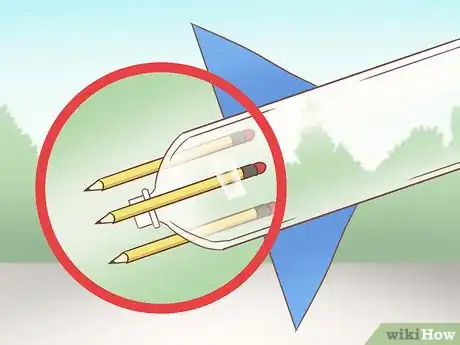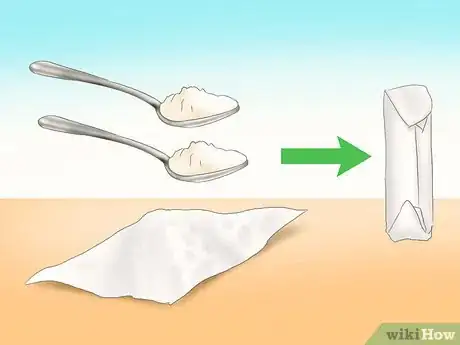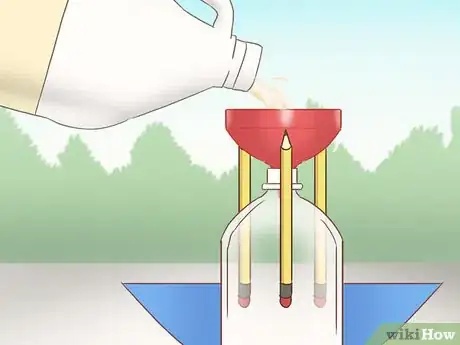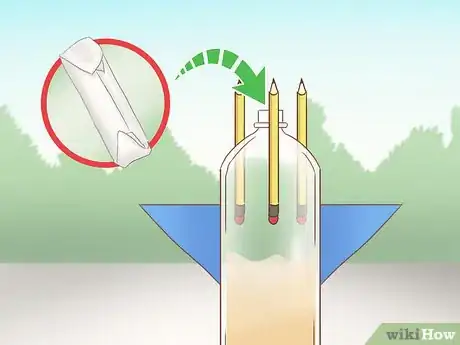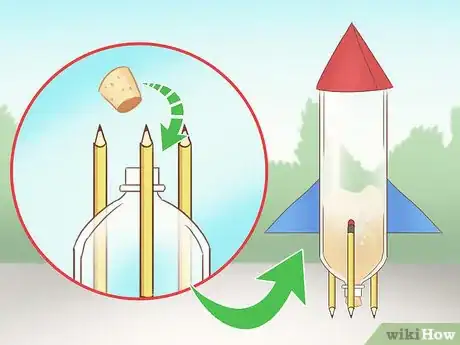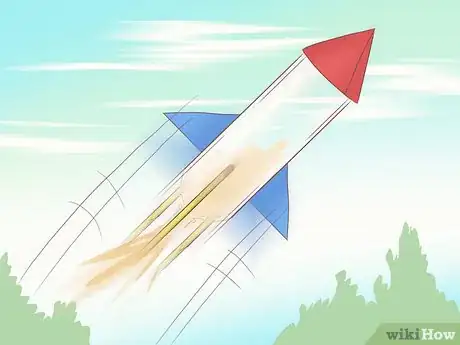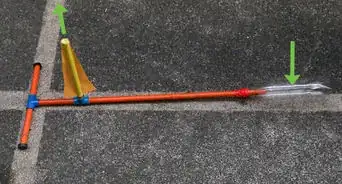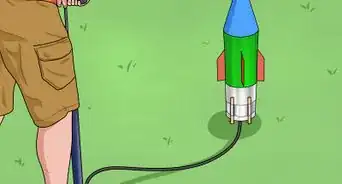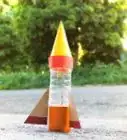This article was co-authored by Jessie Antonellis-John. Jessie Antonellis-John is a Math and Science Instructor who teaches at Southwestern Oregon Community College. With over 10 years of experience, she specializes in curriculum development. Jessie earned her PhD in Teaching & Teacher Education from the University of Arizona, her Master of Education from Western Governors University, and her BS in Astrophysics from Mount Holyoke College. She’s also co-authored several peer-reviewed journal articles in professional publications.
This article has been viewed 183,439 times.
Rockets capture the imaginations of adults and children alike. Unfortunately, we often refer to “rocket science” as if it is the most complicated subject on the planet. While some highly advanced rockets are engineered with extreme precision, you can still make very simple rockets at home. There are several ways to make a homemade rocket from launching matches to shooting off water rockets.
Steps
Building a Match Rocket
-
1Roll two matches in a piece of aluminum foil. Put two matches on aluminum foil with the plain ends sticking out and the match tips pointing in. Roll the matches up like a burrito. Twist one end of the foil tightly around a match and leave the other end rolled loosely.[1]
-
2Anchor the matches. Stick the matchstick of the tightly rolled match into a piece of cardboard. This will hold that match in place. Being anchored in the cardboard also allows you to aim the match and launch in whatever direction you choose.[2]Advertisement
-
3Heat the aluminum foil. Use a candle or lighter to heat the foil. Put the flame directly under the area of foil that conceals the match heads. When the matches get hot enough, they will ignite. This bb will send the loose match shooting out of the aluminum holder.[3]
- When the match heads ignite, gas is rapidly formed and this expanding gas forces the loose match out of the aluminum holder with a considerable amount of force.
Launching a Rocket with Water and Air
-
1Gather your materials. The body of your rocket will be made from a plastic water bottle, a paper cone, and two paper or cardboard triangles. You will use three pencils to make a stand. You will also need a cork, water, and a bicycle pump to pressurize the bottle.
-
2Make a rocket from a bottle. Reduce the drag of the water bottle by taping a paper cone to the top of the rocket (the bottom of the bottle). Tape paper or cardboard triangles on either side of the bottle to act as fins. The triangles should come about halfway up the bottle.
-
3Build a rocket stand. Tape pencils around the sides of the bottle to make a stand. Make sure that the pencils are pointing down. This stand will allow you to point your rocket up (or at an angle if you wish). Without a stand, your rocket will likely just flail around near the ground instead of lifting off.
-
4Put water in the bottle. You should fill the bottle half full of water. The water will provide the mass needed to propel the rocket during the launch. You can add food coloring for a colorful blast off.
-
5Cork the bottle. Throw away the bottle’s original cap and replace it with a cork that fits into the opening of the bottle. The cork will allow pressure to build inside the bottle. The cork will also pop out allowing the contents to shoot out rapidly and propel the bottle.
-
6Pump air into the bottle. Use a bicycle pump with a needle. Insert the needle into the bottle through the cork and pump. Once enough air has been pumped into the bottle, the pressure will force the cork out and launch the rocket into the air.
Make a Rocket with Household Chemicals
-
1Tape pencils around a bottle. Make sure that the ends of the pencils come up past the top of the bottle. This will ensure that they touch the ground when the bottle is upside down. The pencils will allow you to stand the bottle up on its top.
-
2Wrap baking soda in a tissue. Put two tablespoons of baking soda in a tissue and roll it up. Make sure that the sides are folded over so that no baking soda is exposed. This will provide a time delay on the very rapid vinegar and baking soda reaction.
-
3Put vinegar in the bottle. Use a funnel to fill the bottle with vinegar. The vinegar is acidic and will react with the basic baking soda to neutralize. Carbon dioxide will be produced in this reaction, which will cause pressure to build inside the bottle.
-
4Insert the baking soda packet. Drop the baking soda packet into the vinegar. From this point forward, you will need to move quickly. The tissue will unravel quickly. The reaction will start as soon as the baking soda comes in contact with the vinegar.
-
5Cork the bottle. Quickly place the cork in the opening of the bottle. This will prevent gasses from leaving the bottle and cause pressure to build. With the cork in, set the bottle upside down on the pencils.
-
6Watch it launch. As the tissue unravels and the baking soda and vinegar react, more and more gas will build inside the bottle. This will force the cork out from the bottom of the rocket. That force will propel the rocket off of the ground and into the air.
Community Q&A
-
QuestionTo increase distance, do I add more vinegar or baking soda or both?
 Community AnswerJust put 50% vinegar and 50% baking soda. Both should be equal in volume.
Community AnswerJust put 50% vinegar and 50% baking soda. Both should be equal in volume. -
QuestionHow far will the rocket go if I utilize the method of baking soda and vinegar?
 Community AnswerIt will probably go 2-10 meters up, depending on how much fuel you have. Remember to wear safety goggles so you do not damage your eyes.
Community AnswerIt will probably go 2-10 meters up, depending on how much fuel you have. Remember to wear safety goggles so you do not damage your eyes. -
QuestionHow can the acceleration of the rocket be increased?
 StartrekkerCommunity AnswerAcceleration of the rocket can be increased by (any of the following): Increasing the velocity of the exhaust. Decreasing the dry mass of the rocket. Burning propellant at a faster rate. in solid rockets, this is done by using appropriate grain geometry. simply, increase the area of the propellant so that it burns faster.
StartrekkerCommunity AnswerAcceleration of the rocket can be increased by (any of the following): Increasing the velocity of the exhaust. Decreasing the dry mass of the rocket. Burning propellant at a faster rate. in solid rockets, this is done by using appropriate grain geometry. simply, increase the area of the propellant so that it burns faster.
Warnings
- Do this only under the supervision of a responsible adult.⧼thumbs_response⧽
- While all of these ingredients are fairly safe, goggles and gloves will protect you while launching rockets.⧼thumbs_response⧽
References
About This Article
To make a simple match rocket, first roll 2 matches in a small piece of aluminum foil so the match tops are covered and the sticks are poking out at the end. Then, twist the end of the foil closed near the match tips and leave the other end rolled loosely. Once your matchsticks are wrapped, anchor them by stabbing them into a piece of cardboard so they stand up on their own. Finally, hold a lighter under the part of the foil that holds the match tips. When they get hot enough, the matchsticks will rocket out of their aluminum holder! To learn how to make a rocket with baking soda, read on!
